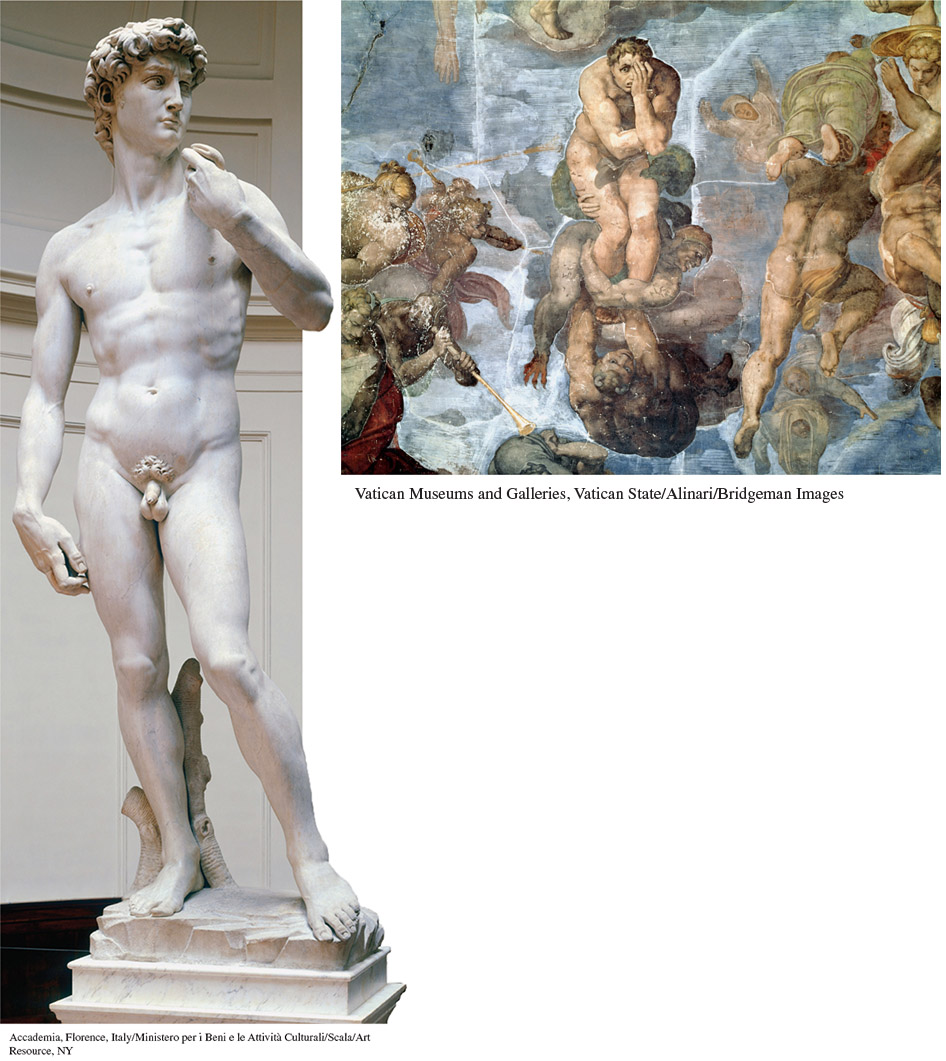
Michelangelo’s David (1501–1504) and the Last Judgment (detail, 1537–1541) Like all Renaissance artists, Michelangelo worked largely on commissions from patrons. Officials of the city of Florence contracted the young sculptor to produce a statue of the Old Testament hero David (left) to be displayed on the city’s main square. Michelangelo portrayed David anticipating his fight against the giant Goliath, and the statue came to symbolize the republic of Florence standing up to its larger and more powerful enemies. More than thirty years later, Michelangelo was commissioned by the pope to paint a scene of the Last Judgment on the altar wall of the Sistine Chapel, where he had earlier spent four years covering the ceiling with magnificent frescoes. The massive work shows a powerful Christ standing in judgment, with souls ascending into Heaven while others are dragged by demons into Hell (right). The David captures ideals of human perfection and has come to be an iconic symbol of Renaissance artistic brilliance, while the dramatic and violent Last Judgment conveys both terror and divine power.
Vatican Museums and Galleries, Vatican State/Alinari/Bridgeman Images